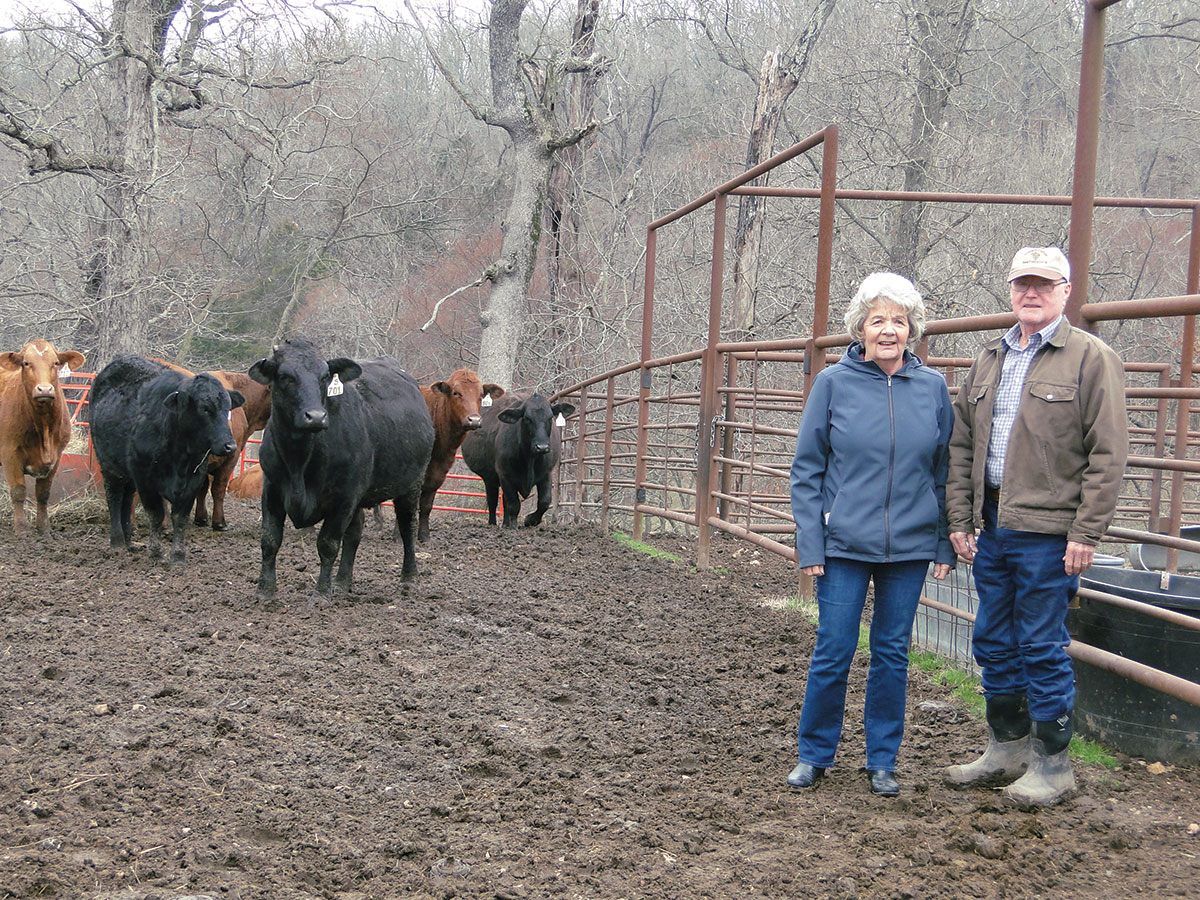
Weather is always a concern when beginning or managing a farm or ranch. Heat stress, drought, flooding or freezing temperatures can impact the operation of the chosen crop. Grazing options may become limited or in abundance. An exit plan or a Plan B carries the burden when the actual plan begins to fail. Protecting the lifestyle means being in tune with Mother Nature, creating grazing boundaries, providing adequate shelter, maintaining a healthy herd via vaccinations and/or forage and keeping predators out.
For the first generation producer, much research has to be done in order to create a sustainable and productive environment. That is the concept that had to be practiced by a mother and two daughters in Pryor, Okla. Sue Parker (mother) purchased farming property several years ago and later daughters, Keli Carter and Patricia Parker, moved on the property. They each had their own endeavors of obtaining a healthier and more self-sufficient way of living. Keli and Sue manufactured the idea that they would grow vegetables to lead them to healthier eating and with great success. They had no idea that Patricia had another idea…chickens. Patricia said, “I wanted my own egg source. A lot of people are raising chickens. How hard could it be?”
“When we were younger, we lived the city life and came to Oklahoma to visit our grandparents. We called one set of our grandparents, ‘Grandma and Grandpa Chicken’ because they raised chickens. We gleaned our knowledge from each, but not nearly enough. I have no idea of what kind they raised or what all was entailed in their care,” stated Keli. Even though they are not first generation producers, they had to acquire the knowledge.
“Patricia brought home eight baby female Cornish Rex chicks. She placed them into a water trough rigged with a heat lamp, water, feed tray and shredded bark. Since they were growing so fast, she requested I make a place for them to eventually call home; it had to be made fast,” said Keli. Sue had more than several buildings and a few were chosen to be the new home. “You can guess who was closer in proximity to the chickens,” said Keli. She was now the new primary avian caregiver.
Once the chickens grew more, the hens began laying eggs. They yielded three eggs in one day and on a good day they would get four. Seeing the small rewards, Keli researched anything and everything about chickens. “I discovered chickens lay eggs every 25 hours. For some crazy reason, I thought we needed more chickens. I researched books, magazines and the Internet about the many different breeds. I narrowed my choices based on the qualities I desired. I wanted non-flighty, average to good layers (200-325 eggs a year), dual-purpose (egg and meat birds), weather tolerant and low temperament personalities,” said Keli.
Needless to say, while buying chicken feed, Keli came home with a box full of chickens. Their domesticated fowl flock has grown significantly. The types she chose were the Ameraucana – very hardy and known for show abilities, Australorp – great nesters for breeding, egg laying record 364 days, Barred Plymouth Rock – hardiness, docility and broodiness, Buff Orpington – great brooders, non-flighty, adapt well to cold climates and Rhode Island Red – prolific egg-laying abilities.
“Picking out chicks was time consuming but was the easiest part. Making sure they have an area full of protection, a place to sleep, nest, eat, drink and roost was the most time consuming,” said Keli. She discovered that the hens lay better when they are cooler in the summer. She hooked up a water misting system and fans to circulate air in their coop. In addition to feed, she freezes fruit as treats on hot days, mostly watermelon and cantaloupe.
Fifty-to-sixty percent of their flock produces eggs each day. One of the lessons learned while trying to get a high yield on egg production, was to reduce the number of roosters or production will drop drastically. The chickens are free-range and peck the property eating grass, worms, bugs and feed. “Although I let them graze freely, I do not leave them out in the winter very long. They like it cool but not freezing. I have thermostat plugged in so that it will automatically turn on the heat lamps whenever the temperature drops below 35 degrees in their coop, which keeps them warm in the winter months,” added Keli.
Keli ended, “Raising chickens is a daily commitment and some days require more care than others. It takes a lot of planning. I open the chicken coop at dawn and close them up at dusk or whenever they go in.” To protect them from predators, Kat, an Akbash breed, watches the flock.
Keli has dabbled in the incubation process with a 65 percent hatch rate and ended up with beautiful and interesting crosses which have become a story all on its own.







